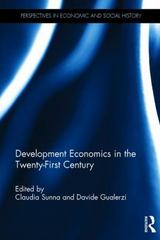Question
A legislature consists of two political parties, L and S, who play an infinitely repeated game. In each round, a policy proposal, x ? [0,
A legislature consists of two political parties, L and S, who play an infinitely repeated game. In each round, a policy proposal, x ? [0, 1] is put forward. Both parties simultaneously vote whether to approve the proposal. If both parties approve, then the proposal passes. If at least one party rejects, then the proposal fails. If the proposal passes, the parties payoffs are uL = x and uS = 1?x. Thus, party L benefits more from "larger" policies, and party S benefits more from "smaller" policies. If the proposal fails, then both parties obtain a payoff of 1/4, associated with the current "default" policy. Thus, the stage game between the parties is represented by the following matrix
Party S
Approve Reject
Approve x, 1 ? x 14 , 14 Reject 1,1 1,1
Consider one round of the stage game (no repetition). The following parts are worth 2.5 points each.
(a) Suppose x ? [0, 1]. Is it a Nash equilibrium for both parties to reject? Explain in a sentence or two.
(b) Suppose x ? (1/4,3/4). Is it a Nash equilibrium for both parties to approve? Explain in a sentence or two.
(c) Suppose x ? (0,1/4). Is it a Nash equilibrium for both parties to approve? Explain in a sentence or two.
(d) Suppose x ? (3/4,1). Is it a Nash equilibrium for both parties to approve? Explain in a sentence or two.
Consider an infinitely repeated version of the previous game, with discount factor ? ? (0, 1). Suppose that at the beginning of period k, the policy to be considered in that period, denoted xk, is drawn (independently) from a uniform distribution on [0,1] (i.e. Pr(xk ? y) = y for y ? [0, 1]). Policy xk is observed by both parties in period k, but the parties do not know which policies will be considered in the future. Thus, the parties expect that on average, the expected value of future policies is 1/2.
We will analyze whether the following strategies are a Subgame Perfect Nash equilibrium of the infinitely repeated game.
Approve in period 1 for all x1 ? [0, 1].
Approve in period k for all xk ? [0, 1], as long as in all past periods the outcome
was (Approve, Approve).
Reject in period k if in any past period a policy was Rejected.
We will focus on the decision of party L (party S is symmetric). The following are worth 2.5 points each.
(e) Suppose that at some point in the past, a policy was rejected. In this case, the strategy specifies that both parties reject in every subsequent period. Is this credible? (Hint: see part (a))
(f) Suppose that in all past periods the outcome was (Approve, Approve). Given that today's policy proposal is x, what is party L's lifetime payoff of approving? (Hint: L gets x today, and in all future periods, it expects E[x] = 1/2).
(g) Suppose that in all past periods the outcome was (Approve, Approve). Given that today's policy proposal is x, what is party L's lifetime payoff of rejecting? (Hint: L gets 1/4 today and in all future periods).
(h) For which values of ? is the proposed strategy a Subgame Perfect Nash equilibrium? (Hint: it is most-tempting for party L to reject in period k if xk = 0)





Step by Step Solution
There are 3 Steps involved in it
Step: 1

Get Instant Access to Expert-Tailored Solutions
See step-by-step solutions with expert insights and AI powered tools for academic success
Step: 2

Step: 3

Ace Your Homework with AI
Get the answers you need in no time with our AI-driven, step-by-step assistance
Get Started


